I grew up in California, in the land of wooden homes and yearly wildfires. Somehow, I never questioned the practice of building homes that are as flammable as the wood they were made of. As I entered my twenties, I began to contemplate just about everything I had grown up believing. And I began to wonder if there was another way to build.
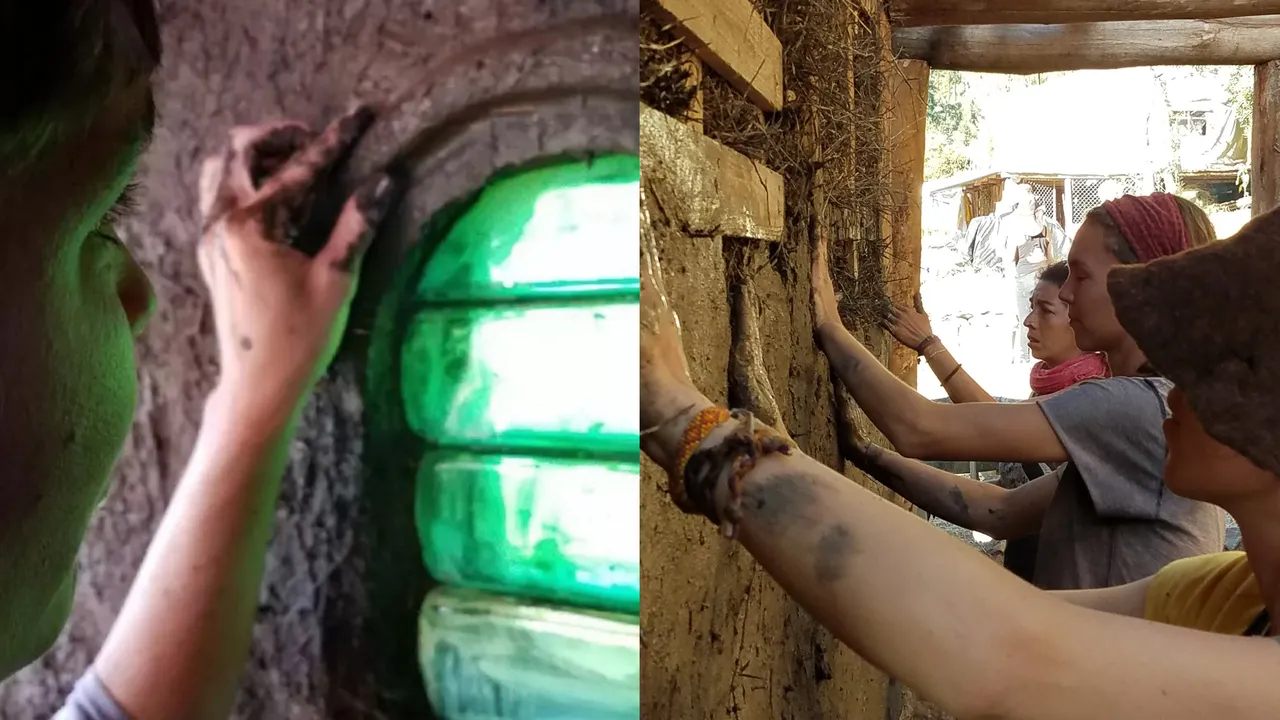
And of course, there is! Sometimes the most simple solution is best. Humans have made homes out of clay, sand, and straw since pre-history. Now we are living in a renaissance of earthen homes. It is an exciting time when modern building is molding with the most primordial supplies.
Years ago I participated in my first natural build. I was 23 years old, backpacking across Mexico and volunteering on farms of all kinds. I don’t have the original photos anymore though I do have the pages from the zine I created to document the life changing experience.
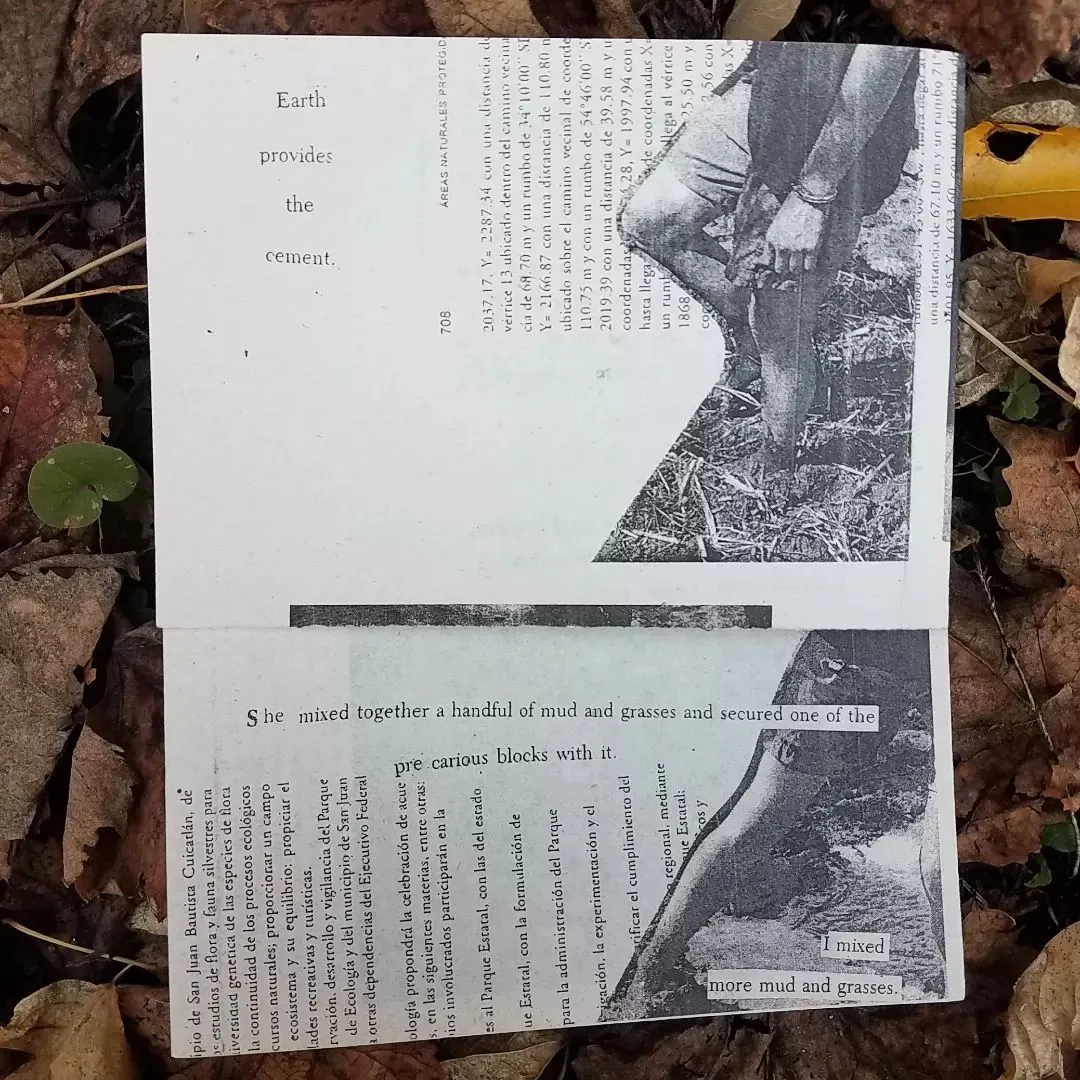
A group of about a dozen people from all over the world and myself joined forces to build a dome made with recycled bags filled with sand and soil from the site itself. This sort of building, called super adobe, is pretty common in the drier areas of Mexico where seismic activity and limited access to hardwoods make the wood frame buildings I had grown up seeing very impractical. In fact, all throughout Mexico I saw many more homes built of adobe or some other earthen technique than of wood or even cement.
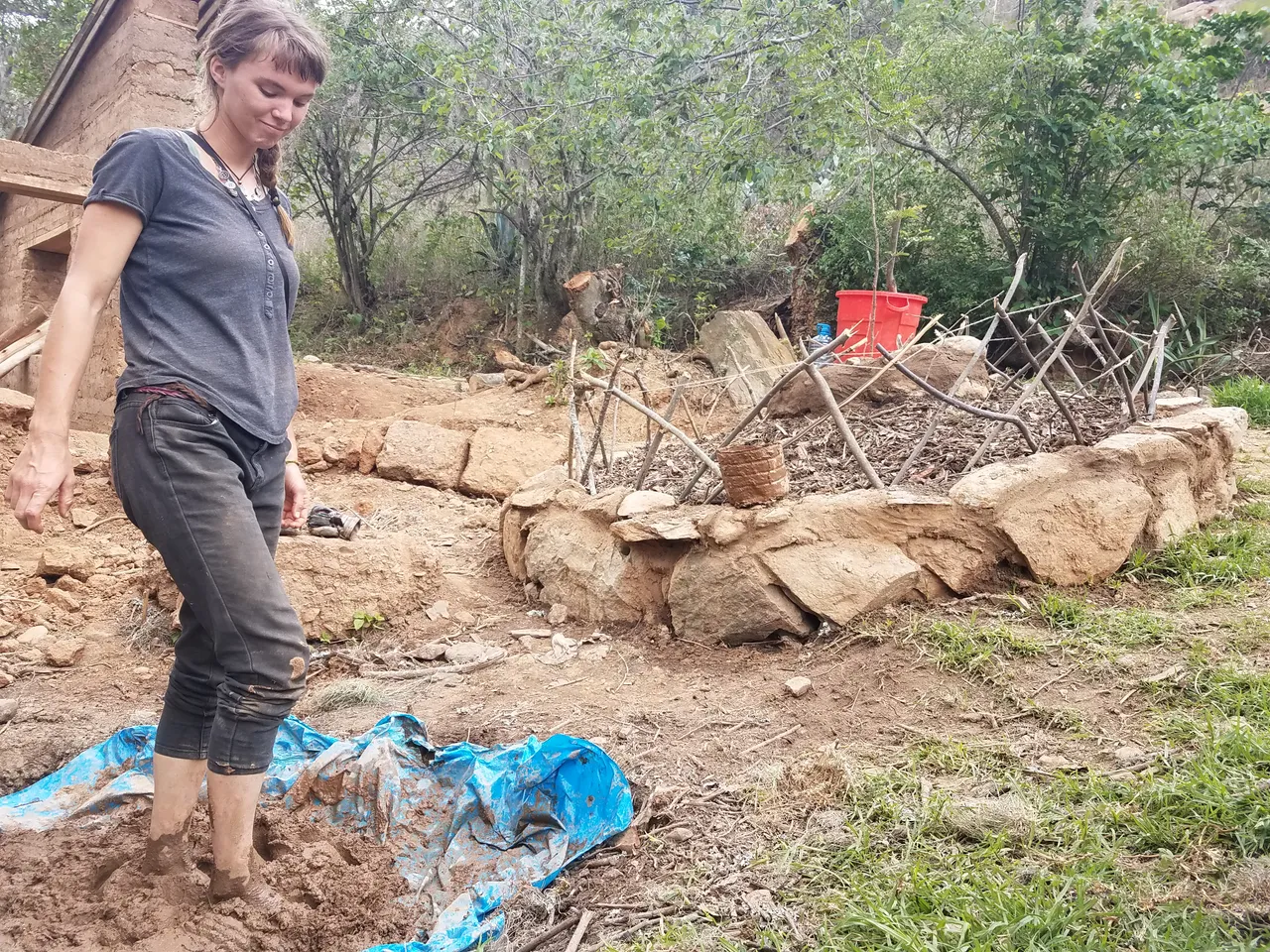 (The building blocks of a material commonly called cob: mud, sand, and straw in a workaway site in Peru)
(The building blocks of a material commonly called cob: mud, sand, and straw in a workaway site in Peru)
I learned a great deal participating in this project and dozens of others throughout my journey from North America, through Central America, and south to where I now reside in Argentina. A couple of weeks spent helping out in a dozens of building projects taught me a great deal.
I learned the basic terminology of building in both English and Spanish. I learned that adobe bricks preceded red bricks and are made from clay, sand, and straw. But before bricks of any kind, most buildings were built with cob which is quite simply a mixture of clay, sand, and straw with a bit of water added. Cob is to be mixed well, often by humans stomping around until the cob is much like play dough.
 (A group of people making a muddy mix to build walls with in Columbia.)
(A group of people making a muddy mix to build walls with in Columbia.)
I also learned a lot about myself. Specifically, I learned that the physical labor involved in natural building wasn’t to be my greatest challenge. I have always been a creative type and very athletic, so I assumed that building with my hands would come easily to me. What I didn’t know is how much teamwork is required for these kinds of builds. Not only teamwork but also interdependence, something that this solo-artist was not so prepared to do, much less in a foreign language!
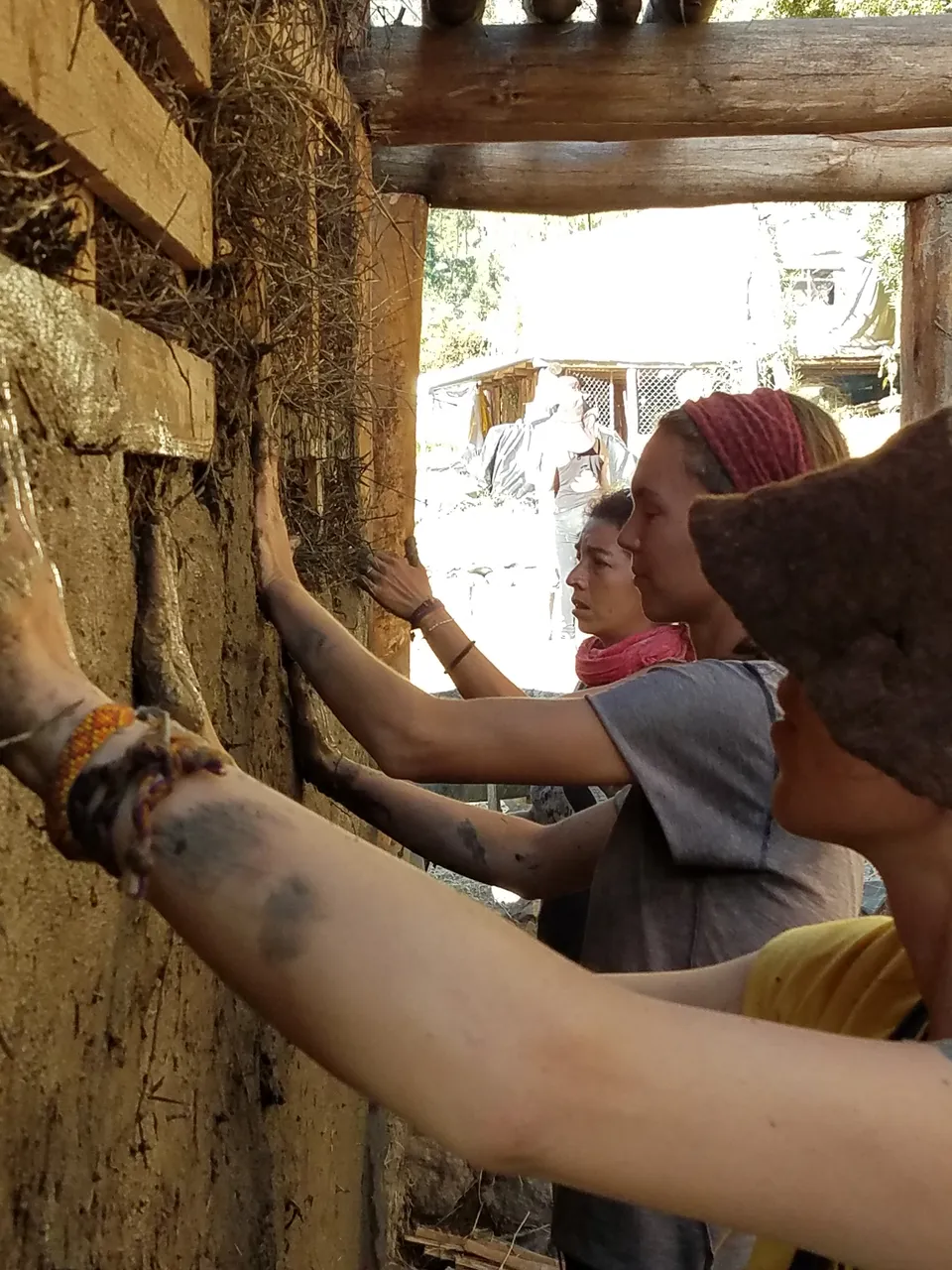 (Some new building partners and myself putting up a earthen wall, also in Columbia.)
(Some new building partners and myself putting up a earthen wall, also in Columbia.)
For all you other solitary artists who are interested in making clay structures, not to worry! There are plenty of DIY natural building projects that can be made by one or two people alone. In fact, I have written several posts about a sola project that I completed over in the ecoTrain community. It is a very classic first natural building project, a cob bench.
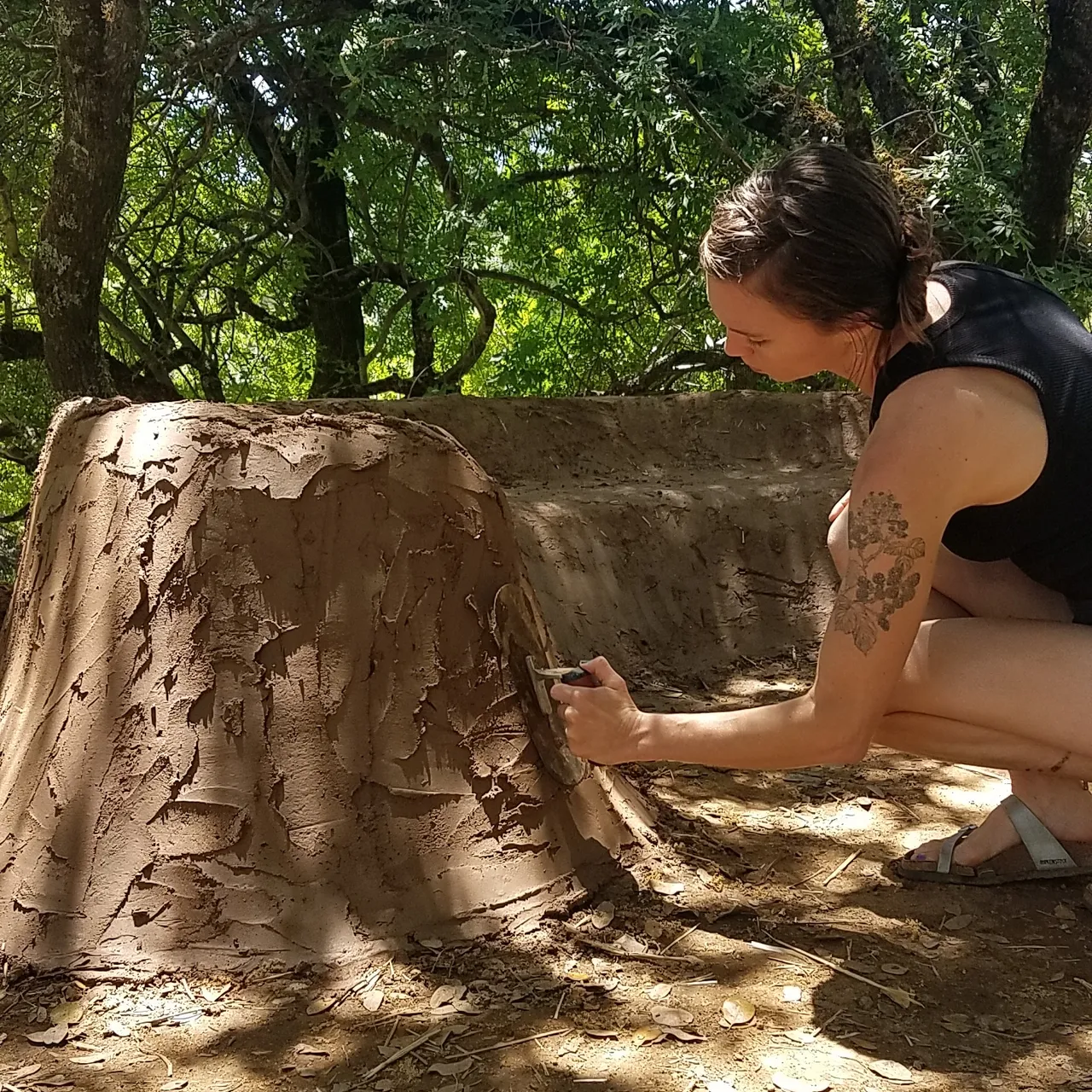 (Trials and errors in my first ever cob bench in California, USA)
(Trials and errors in my first ever cob bench in California, USA)
I built this over the course of several visits to my parent’s land. After years of learning and building abroad, this was my first solo project in my homelands of California and kind of a full circle experience.
Working on this project by myself with the company of passing deer and turkeys was very blissful. I relished my alone time and the ability to decide every step of a project. The downside is that I committed a few errors and wasted a lot of time that could have been avoided if I had worked with a more experienced builder.
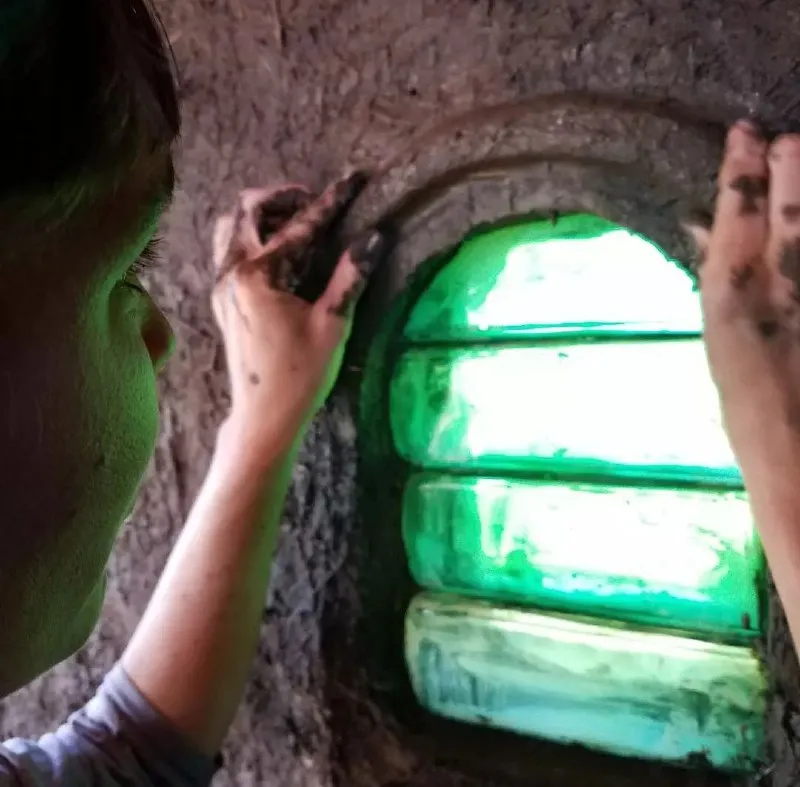 (Molding a window frame with a collection of recycled green bottles in Argentina)
(Molding a window frame with a collection of recycled green bottles in Argentina)
Now, as my partner and I work to build our very own home, I am once again confronted with my tendency toward shying away from team efforts. This time, however, I am not just building an outdoor sitting space or passing by on my travels. The pot of gold at the end of this challenge will be our very own home made by our very own hands. And, hopefully, the help of some other hands, too.
For the past five years we have been living as caretakers on a lovely 10 acre farm as we searched for, and eventually bought land of our own. Now the owner has decided to sell this farm, and thus we have less time than we expected to build a comfortable dwelling for ourselves and our three cats. Originally we had dreamt of building a rounded home built entirely of cob with a living roof — kind of like a hobbit home. That sort of building takes years to complete between two people so, we have decided to combine a few different designs and are taking elements from the classic log cabin, earth ship, and the very trendy tiny house design.
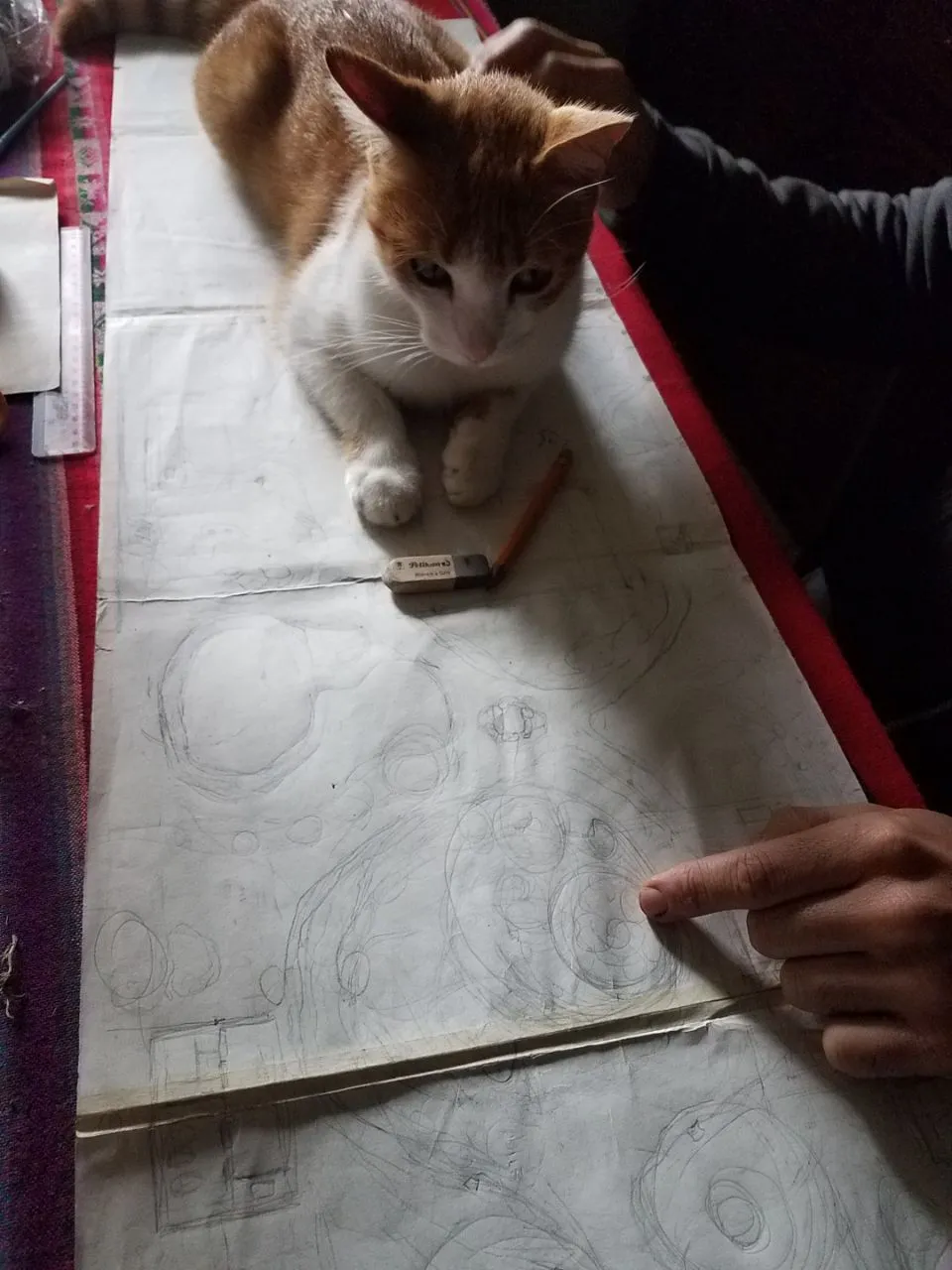
A tiny house is most often a simple, rectangular dwelling, usually built on a trailer. A couple of years ago we bought an acre of land about a mile from where we currently live. So, this tiny dwelling will have a foundation instead of being built on a trailer. Our tiny house floor plan will be two rooms: a bedroom and a living room/kitchen with a bathroom as a separate building.
In the last few months, we have been working hard to clear the building site and excavate all the boulders that are in the way of a stable foundation. This part has been quite grueling! I am glad to say that a few days ago we unearthed the last of the boulders and are planning to start raising walls as soon as the weather permits.
It is simultaneously a very exciting and very challenging time for us both. Even so, I feel certain that the hard work will pay off, and I will let you all know how it goes.
